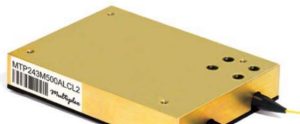What Are the Functions of Waveguide Circulators?
Waveguide circulators are specialized devices in radio frequency (RF) and microwave systems that perform critical functions in controlling and managing the direction of signal flow. These devices are integral to ensuring system efficiency, protecting sensitive components, and enhancing overall performance in complex communication and radar setups.

Directional Signal Routing
Sequential Signal Transfer
A fundamental function of waveguide circulators is to direct signals in a unidirectional flow from one port to another in a sequential manner. For example, a signal entering port 1 will be routed to exit from port 2, and a signal entering port 2 will exit from port 3, and so forth. This directional control is essential in systems where multiple components must interact without direct signal interference from adjacent parts.
Isolation and Interference Reduction
Waveguide circulators provide high isolation between the ports, typically ranging from 20 dB to 30 dB. This isolation is critical in preventing signal feedback from one port to another, which could lead to interference and signal degradation. By ensuring that signals do not re-enter the system, circulators help maintain the purity and integrity of data transmission across the network.
System Integration and Simplification
Efficient Use of Components
Integrating waveguide circulators into RF systems allows for a more efficient use of antennas and transceivers. In radar and satellite communications, for example, a single antenna can be used for both transmitting and receiving signals. The circulator directs the outgoing and incoming signals appropriately, thus eliminating the need for separate antennas for transmission and reception, which simplifies the system design and reduces costs.
Protection of Sensitive Equipment
Another crucial function of waveguide circulators is to protect sensitive system components from high-power signals. In radar systems, for instance, the circulator prevents high-power transmitter pulses from damaging the receiver. By routing these pulses away from the receiver and towards the antenna, circulators ensure the longevity and reliability of the equipment.
Enhanced Performance in Diverse Applications
Telecommunications
In telecommunications, waveguide circulators are used to manage signals in RF distribution networks, ensuring that signals from various channels are effectively separated and directed to the correct paths without interference. This capability is vital for maintaining clear and reliable communication channels in cellular networks and broadcasting services.
Medical Imaging
In medical imaging technologies, such as MRI machines, waveguide circulators direct RF energy efficiently between the power source, the scanner, and the receiver. This precise energy management is essential for producing high-quality images without risking the integrity of the sensitive components involved.
Scientific Research
Waveguide circulators also find applications in scientific research facilities, particularly in experiments involving electromagnetic wave manipulation and measurement. They enable researchers to direct waves precisely within experimental setups, thereby facilitating accurate data collection and analysis.
Waveguide Circulators play a pivotal role in the functionality and efficiency of modern RF and microwave systems. By managing the flow of signals, protecting sensitive components, and simplifying system architecture, these devices are fundamental to the advancement and reliability of technology in communications, radar, medical imaging, and beyond. Their ability to enhance system performance while ensuring robust operation makes them invaluable in today’s high-frequency electronic environments.